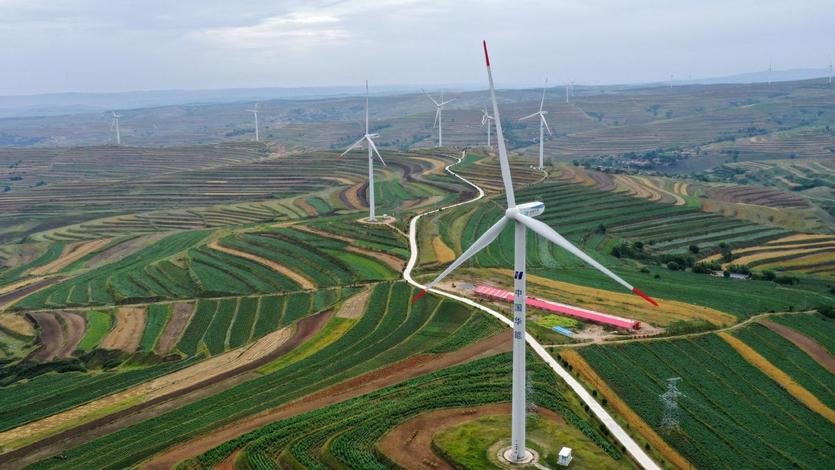 A wind power plant in Dingxi, Gansu province. (PHOTO / XINHUA)
A wind power plant in Dingxi, Gansu province. (PHOTO / XINHUA)
China's emissions trading system recorded trading volume of 179 million metric tons in 2021, injecting new impetus into the country's ongoing efforts to foster green, low-carbon development, according to experts.
The trading system, which was launched on July 16 and follows the cap-and-trade principle, is an effective tool for energy conservation, emissions reduction and carbon control, the experts said. It will also help the country meet its targets of reaching peak carbon dioxide emissions before 2030 and achieving carbon neutrality before 2060, they added.
The trading system made considerable advances last year. The turnover of carbon trading was 7.66 billion yuan ($1.2 billion) over 114 trading days last year, according to the Shanghai Environment and Energy Exchange.
The price of the carbon emission allowance, which companies can buy or trade under the system, closed at 54.22 yuan per ton on Dec 31, up 12.96 percent from the opening price of the first trading day. The average daily trading volume of the allowance topped 1.25 million tons, which was 22 times and 53 times of its counterparts in the European Union and South Korea, respectively.
Experts said that adopting a market-based mechanism has shown the government's determination to step up decarbonization efforts as well as promote a global response to climate change.
Lin Boqiang, head of Xiamen University's China Institute for Studies in Energy Policy, said China's carbon trading market is an effective tool to control carbon emissions and has made impressive achievements.
However, Lin said the relatively small value of total trading was largely due to the limited number of emitters included in the trading system and the low price of the carbon emission allowance. The system is currently limited to more than 2,000 enterprises involved in the power industry, but will be expanded to other industries in the future.
"To propel trade activity on the market, its coverage of industries and trading entities should be expanded, and adjustments are also needed to optimize the pricing system so that efforts by enterprises to control carbon can be effectively rewarded," Lin said.
"More energy-intensive industries, such as cement and electrolytic aluminum, will likely be included in the trading system during the second half of 2022," Lin added.
Lai Xiaoming, chairman of the Shanghai Environment and Energy Exchange, said the emissions trading market is in the early stage of development and has some structural deficiencies compared with other markets, such as the EU.
Lai said in a recent interview with Shanghai Securities News that the exchange will add more participants to the trading system and the market will be extended to include more carbon-emitting industries. Greater efforts will also be made to roll out derivative products.
Guo Haifei, deputy director of the Green Innovation Center of the Investment Consulting Special Committee of the Investment Association of China, said the development of the system and growth of China's carbon trading market will contribute to the fostering of a green and low-carbon circular economic system globally.
Shi Jing in Shanghai contributed to this story.
Contact the writers at ouyangshijia@chinadaily.com.cn


